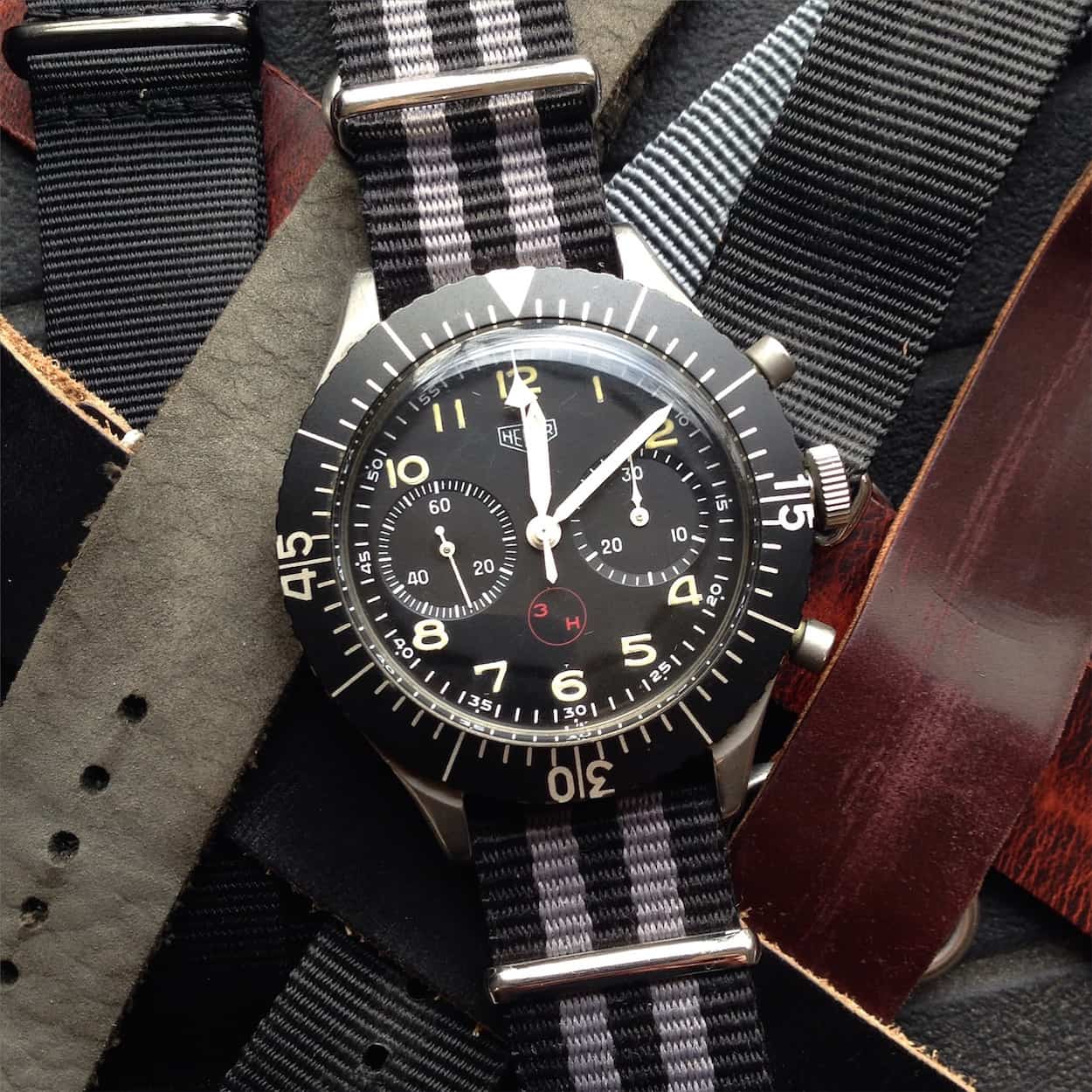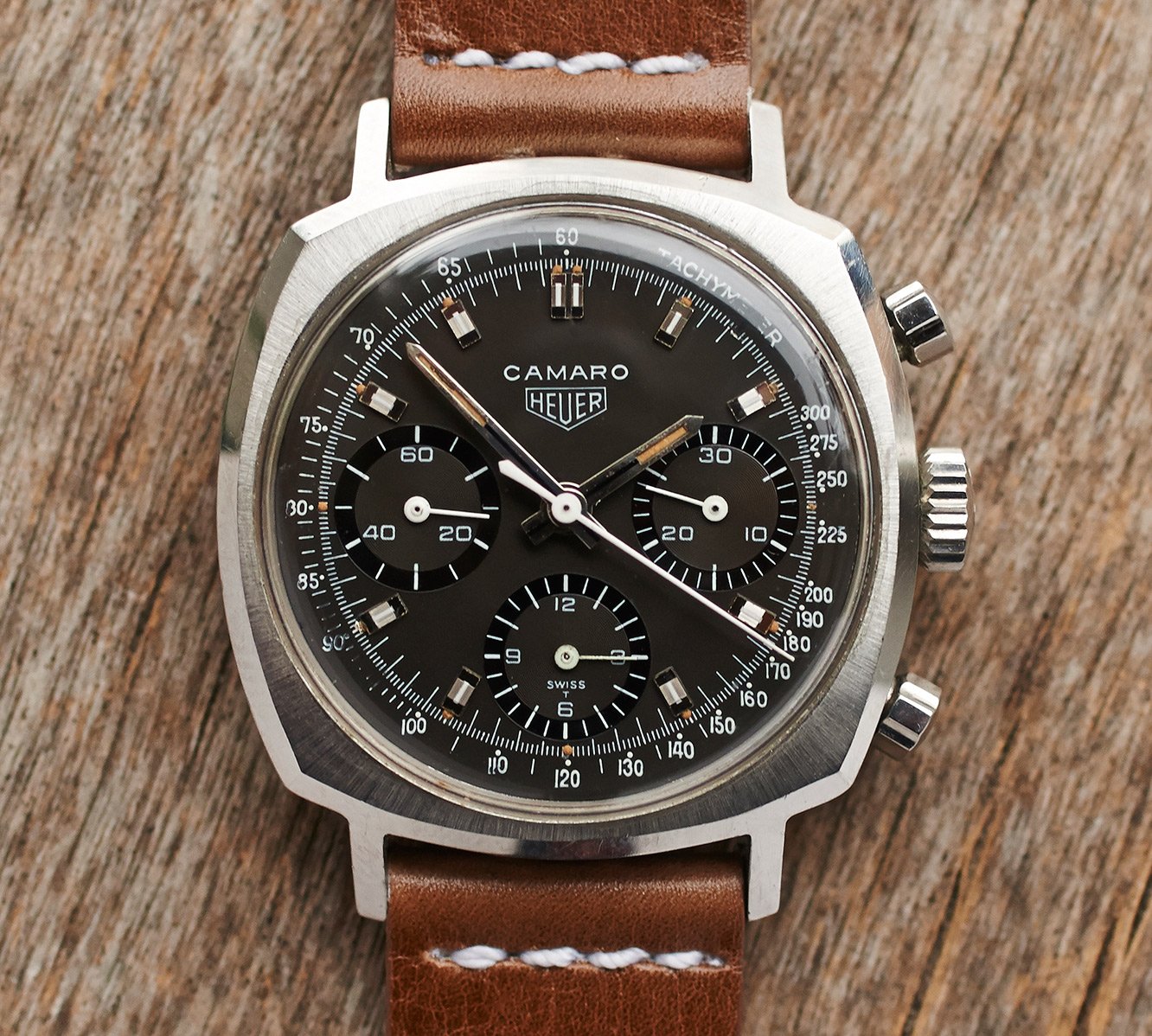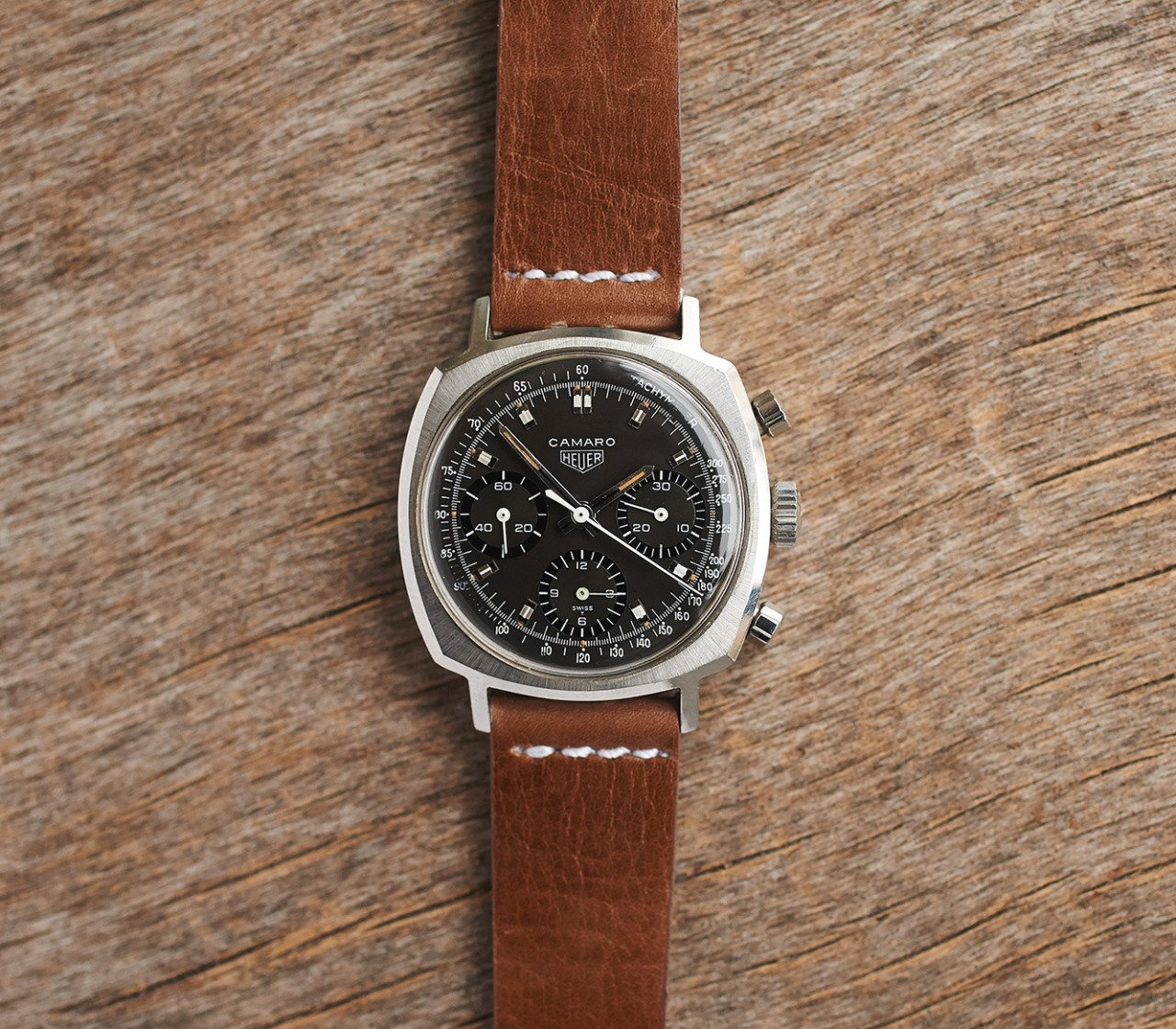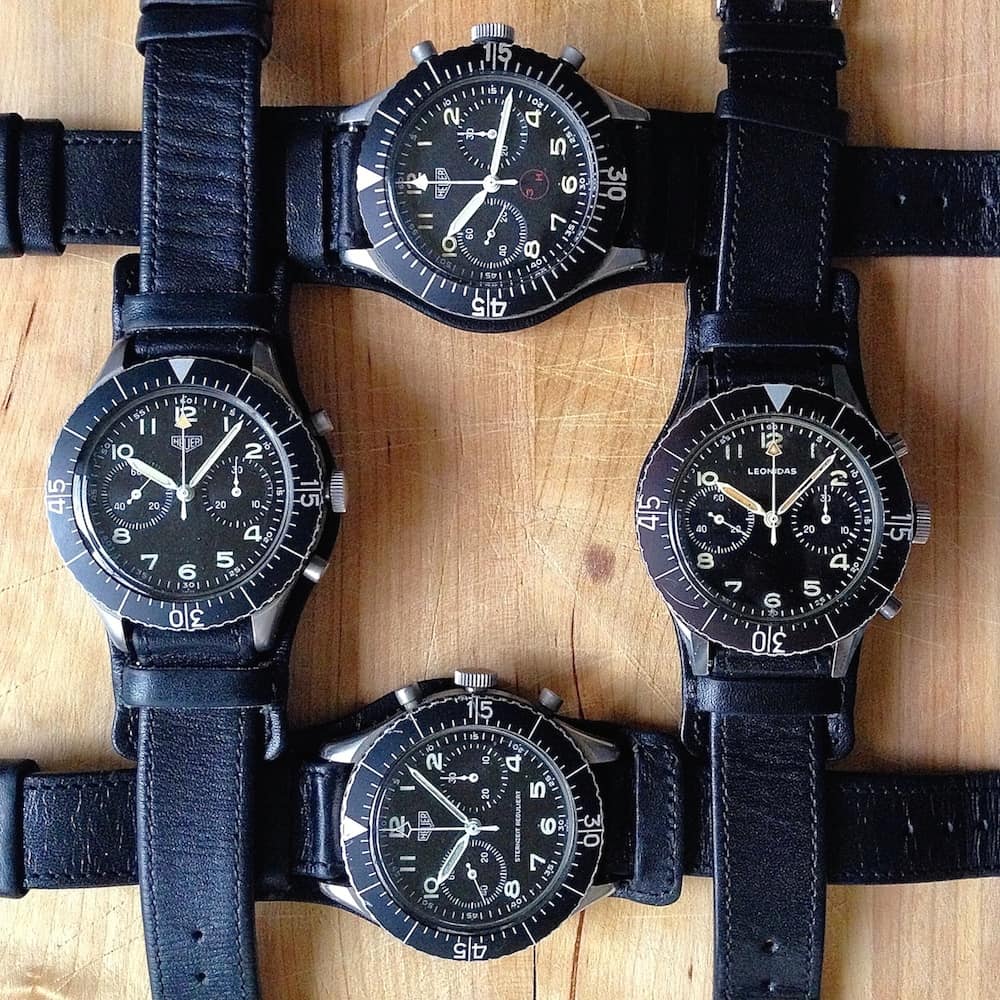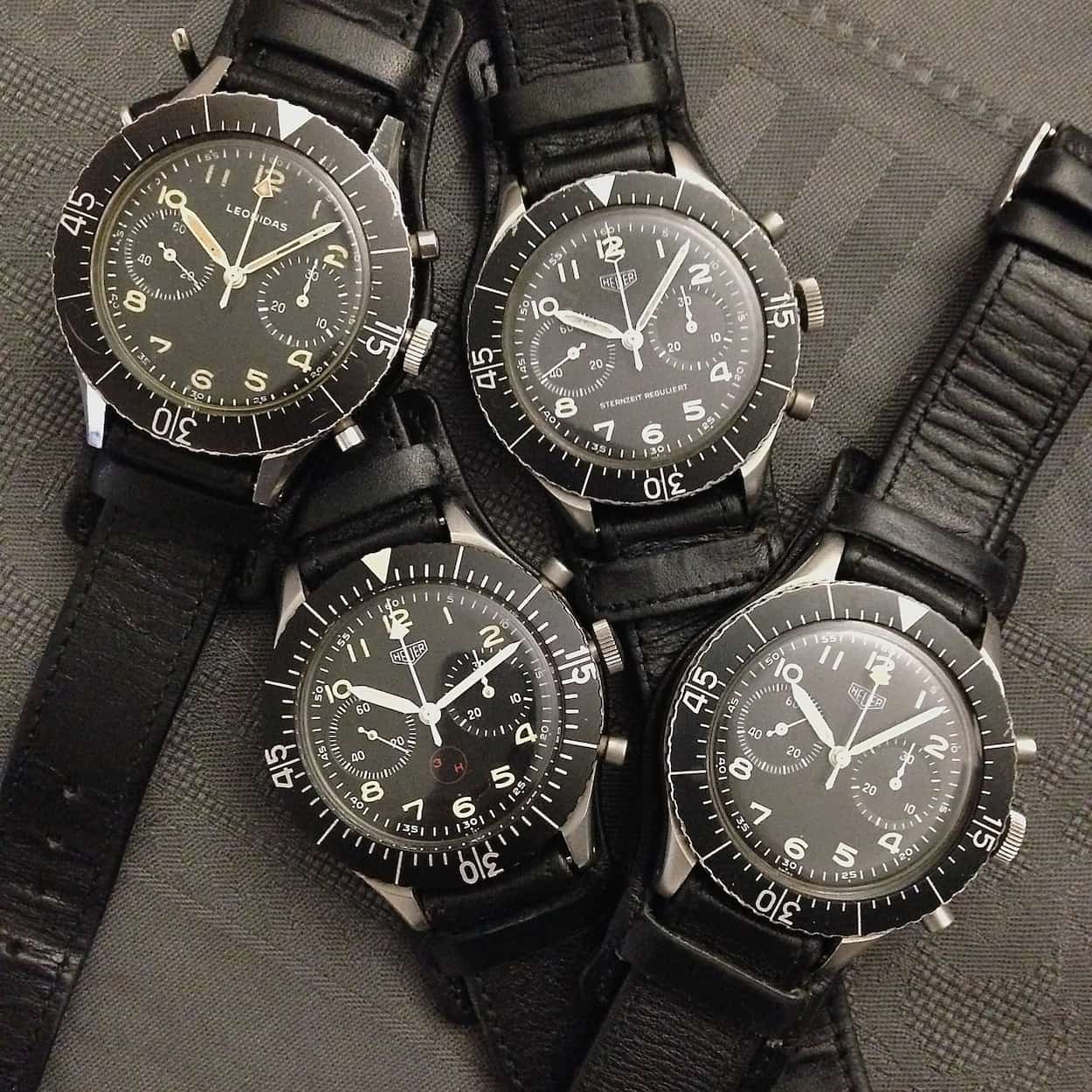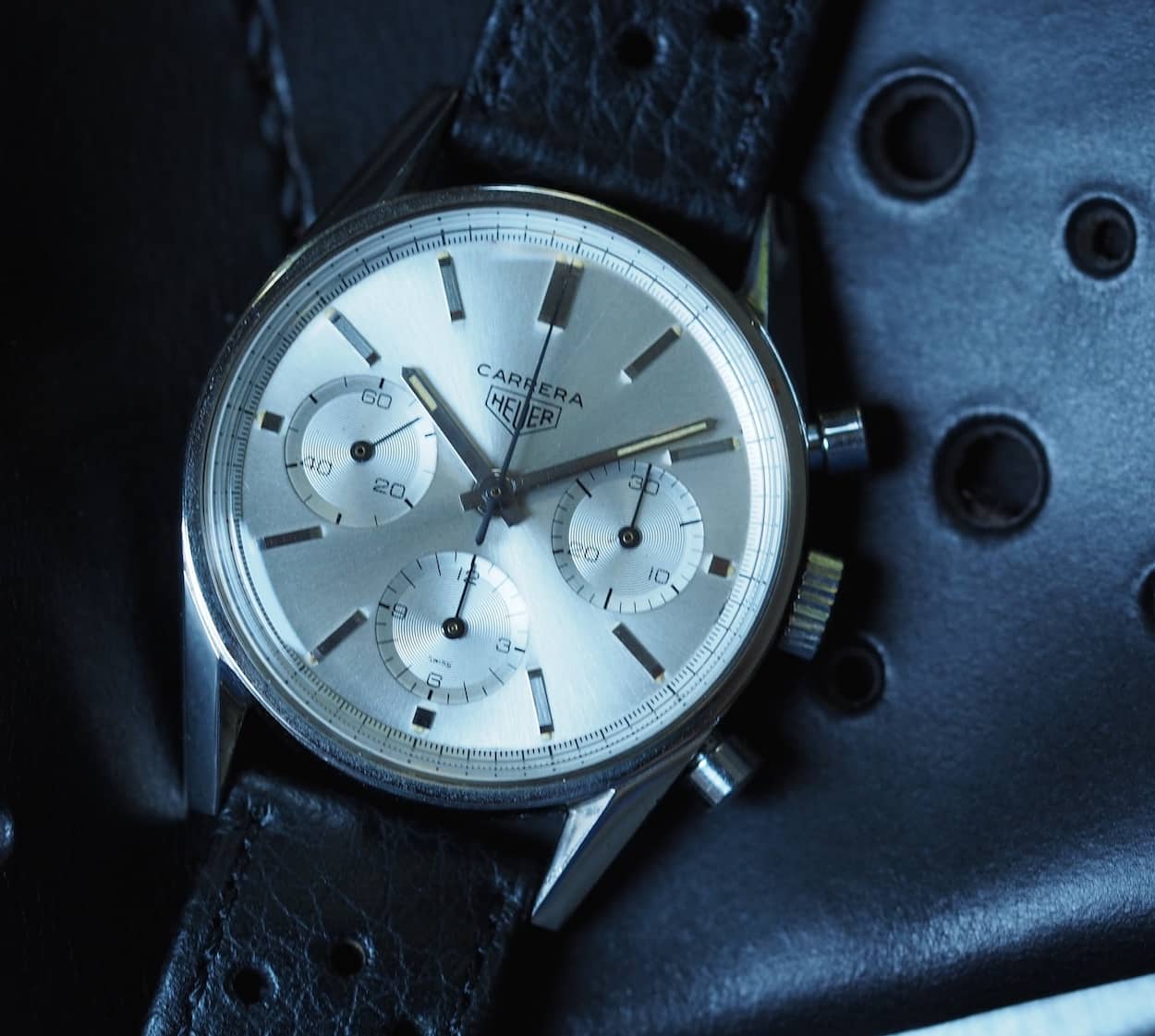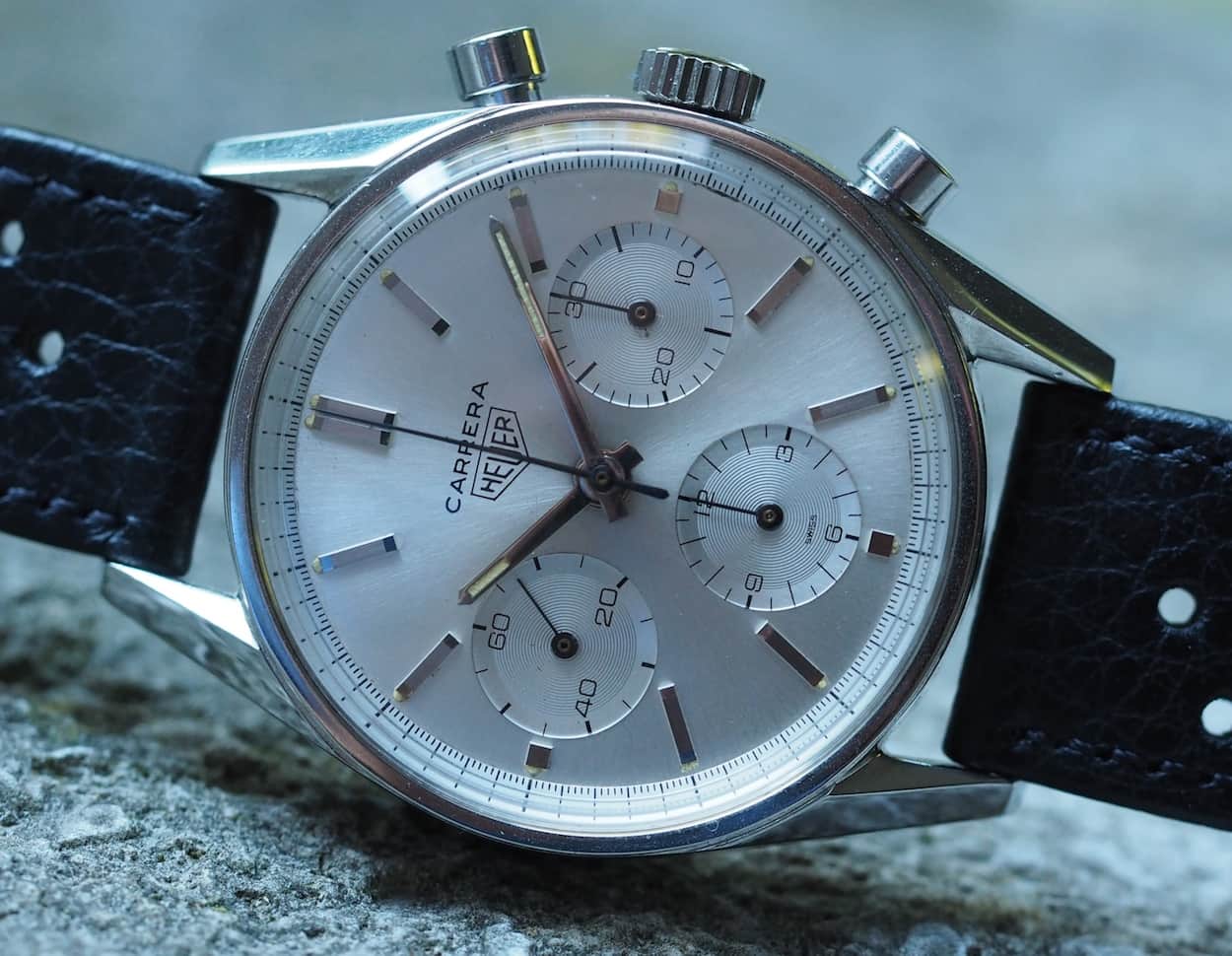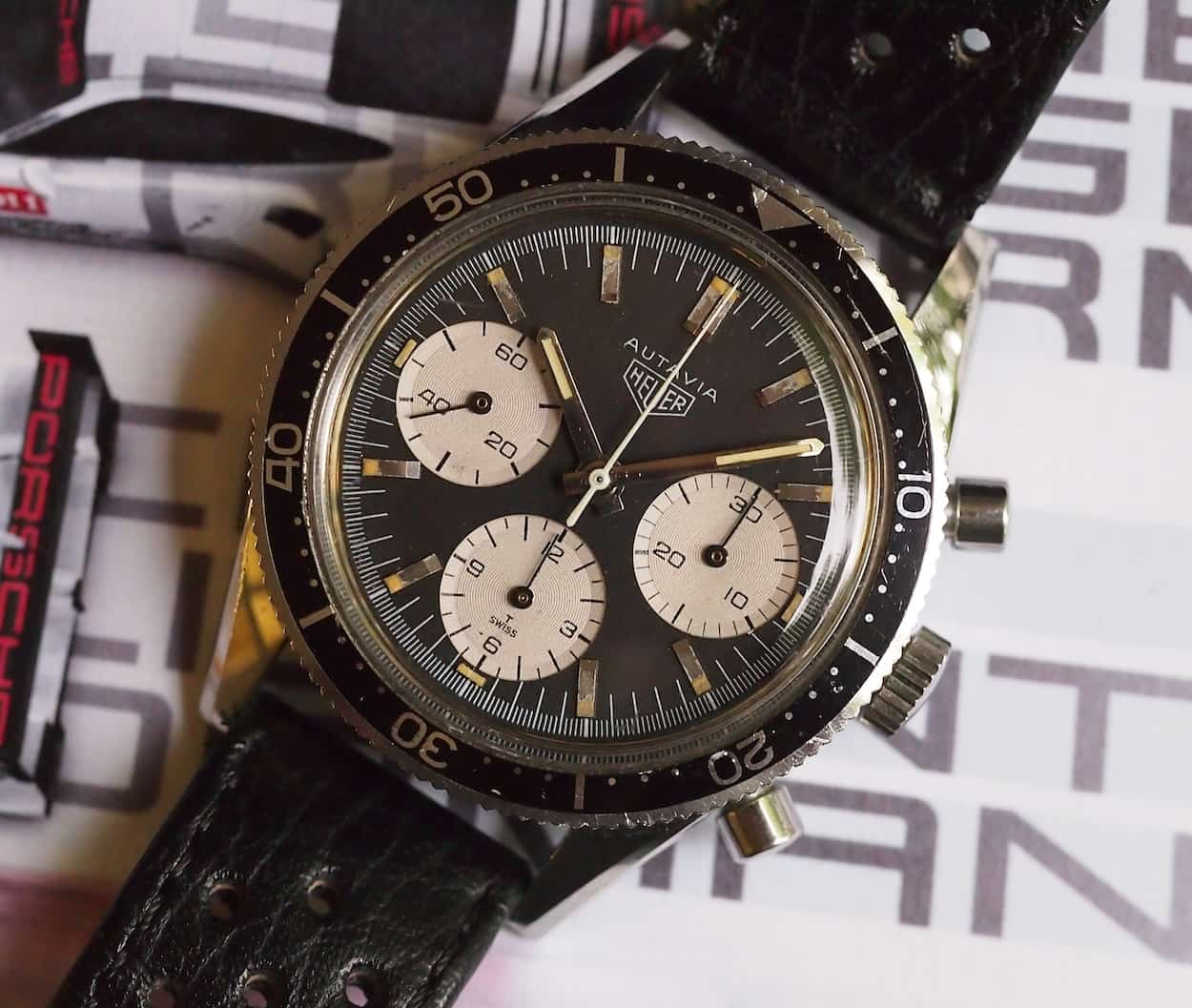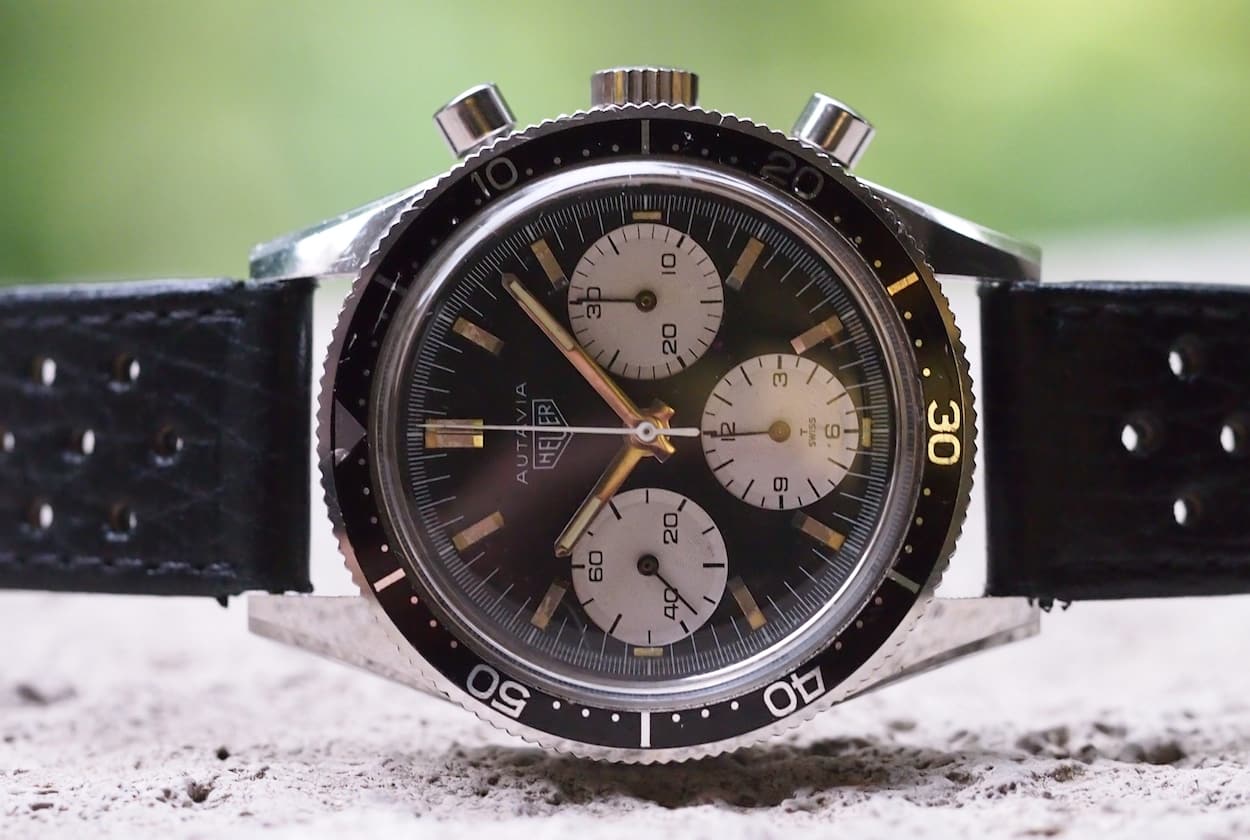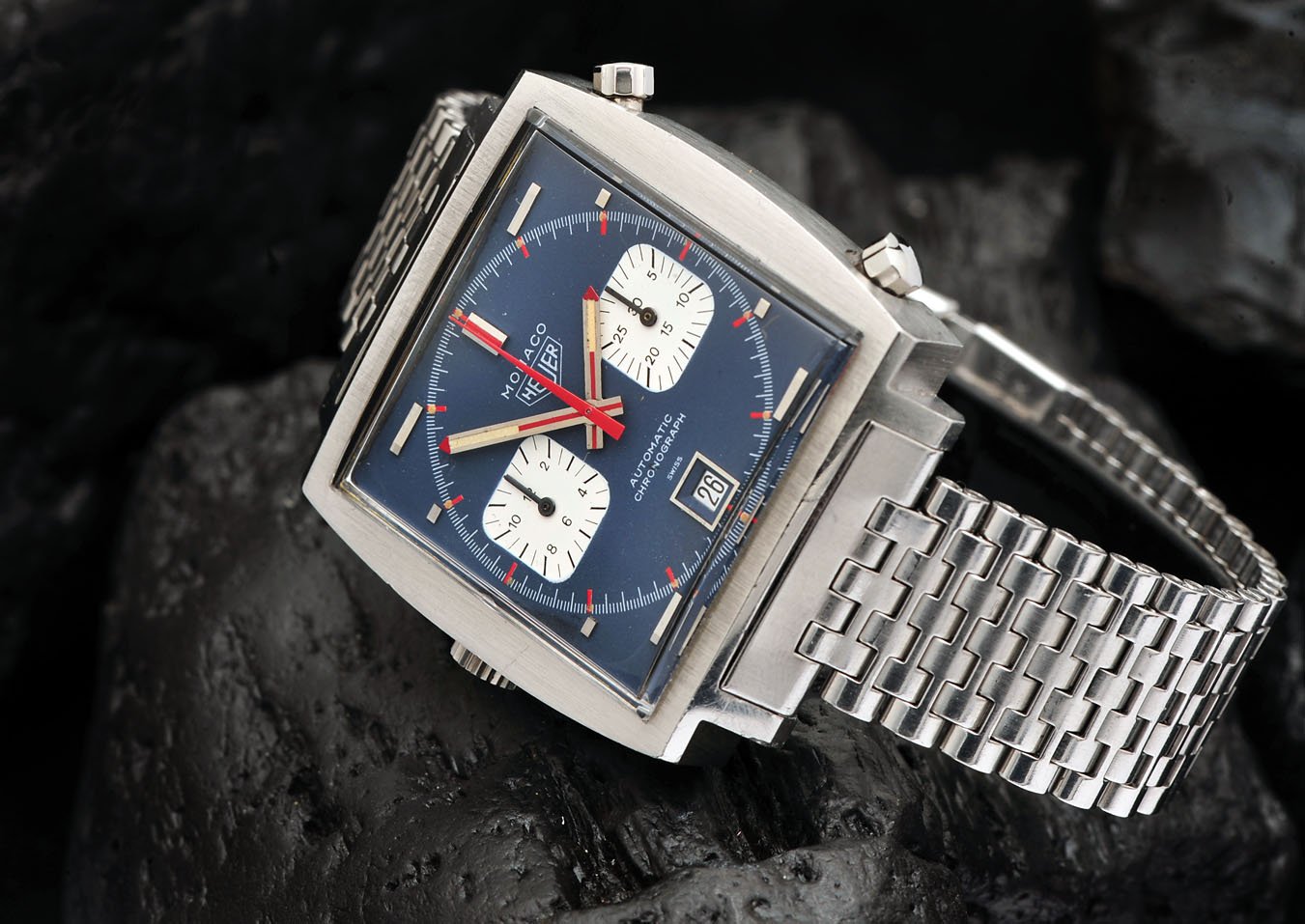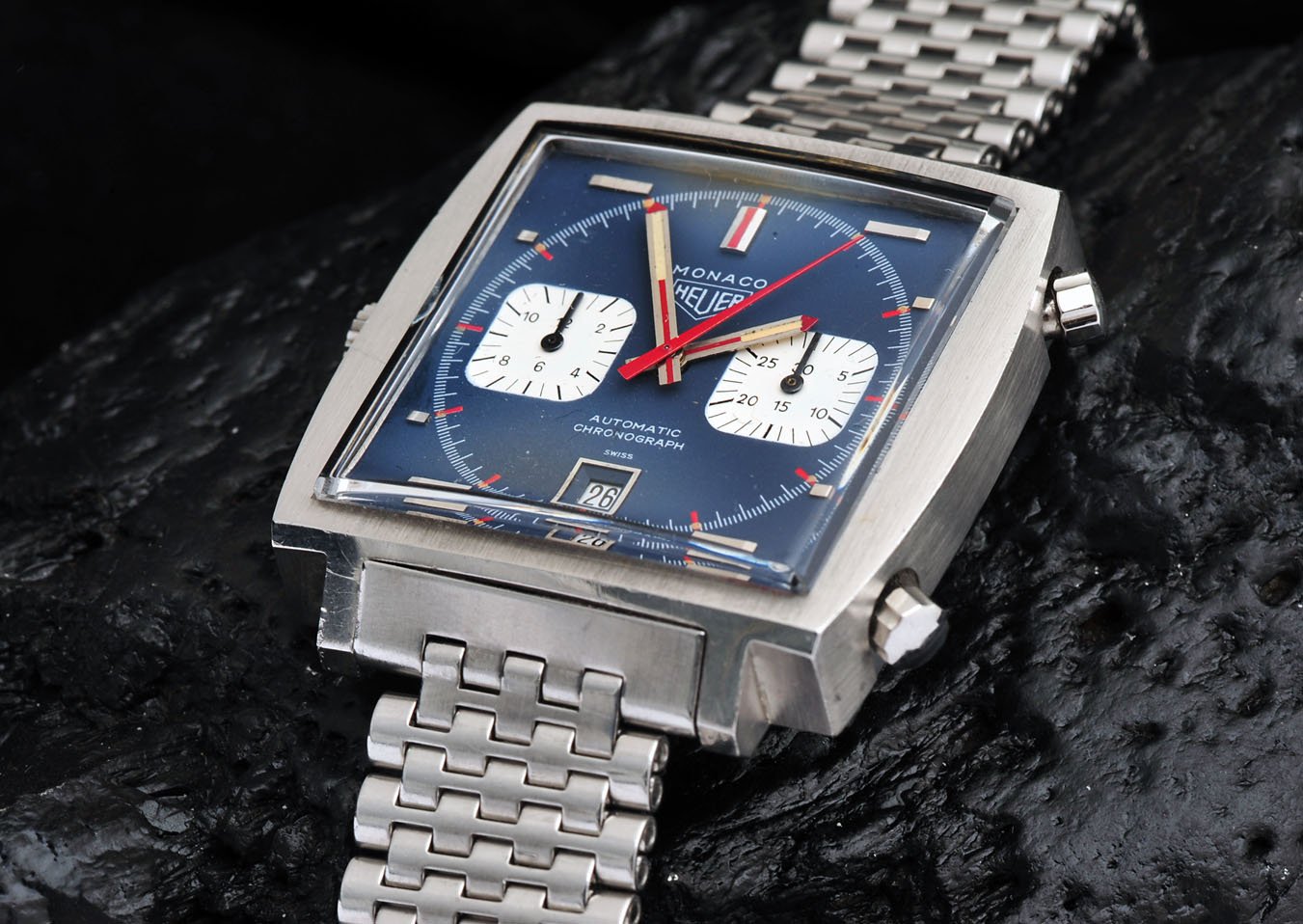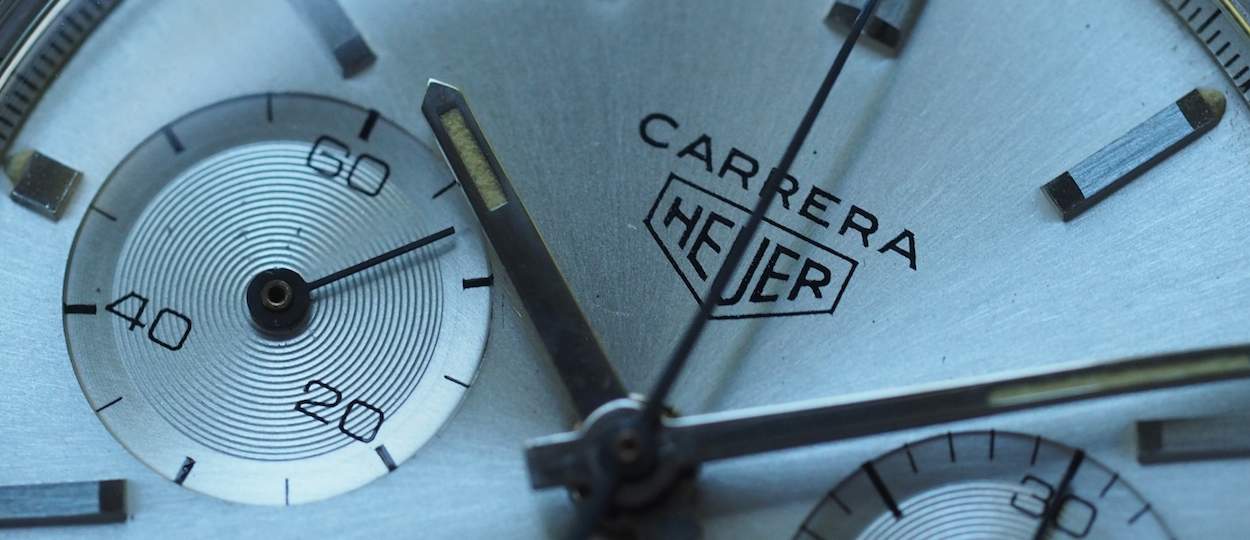Buying Guide: The Best Heuer Watches From The 1960s
We like to talk about vintage watches a lot within the Fratello team. While the daily routine is largely focused on the most recent developments in the world of watches, the most fun for many of us lies in the world of vintage watches. It’s a world full of history, remarkable watches, incredible stories, and quirky details.
This week we will be looking at some of the best Heuer watches from the 1960s. It’s a world of some of the most iconic chronographs we know. It’s what made Heuer one of the most important brands of the decade.
In the 1960s, we witnessed developments that challenged the status quo of watch design forever. While the 1950s introduced the sports watches next to the dressier timepieces people were used to, the 1960s took that trope to the extreme. The sheer amount of watches that pushed the visual boundaries of what was known and accepted was enormous. On top of that, we also saw great technical developments with the race to produce the first automatic chronograph as the most significant of the decade.
Heuer in the 1960s
The story of the Heuer brand, in short in the 1960s, is without a doubt the story of the sales and marketing genius of Jack Heuer, the thrill of racing, and a string of incredible chronographs. It made the brand one of the leading brands in the sixties. Releases like the Autavia, the Carrera, and the Monaco have become industry icons that are heavily sought after by collectors. Heuer was part of the Chronomatic/Project 99 Consortium that released the Calibre 11 in 1969. If you have the time, I suggest that you read about the Heuer story, because it is one of the success stories of that era.
The best thing about Heuer in the sixties and seventies is the great variety of designs.
For me, the best thing about Heuer in the sixties and seventies is the great variety of designs. The mentioned Autavia, Carrera, and Monaco look nothing alike, which is one of the biggest attractions of the vintage Heuer releases. On top of that, the watches were powered by some of the most iconic chronograph movements. As a result, Heuer has become incredibly popular with vintage collectors, and buying them does require quite a bit of money.
If you first start out exploring the world of vintage Heuer, don’t be surprised to find a great variety of subtle and not so subtle differences between the different generations of one model. Especially the number of dial executions is sometimes overwhelming. But once you jump in, there is no holding back. It’s a joy to find the watches you love the most. Let’s take a look at five possible options.
The entry-point — Heuer Camaro 7220 NT
The first Heuer on this list is the Heuer Camaro with its distinct cushion-shaped case. It makes the watch a stand-out in the Heuer models from the sixties. The Camaro was produced from 1968 until 1972, so it had a relatively short production run. In those four years, Heuer produced a great variety of different Camaro models. There are two and three sub-dial versions that use different Valjoux movements. On top of that, you could choose between stainless steel, gold-plated, and a full 18k gold case. And lastly, Heuer produced a great number of different dial variations for the Camaro.
The simple execution in black and steel works the best in combination with the case.
When it comes to the execution, I like the Camaro with three sub-dials powered by the legendary manual-wind Valjoux 72 chronograph movement. The reference number used is the 7220 NT, with the NT indicating the dial color, in this case, a charcoal dial with charcoal registers. The 7220 NT came in several executions, and the one you see here comes with hands that have black inserts and markers are short with white inserts.
Mike actually owns a different execution with an orange central chronograph hand and orange hands for two sub-dials. While some love that splash of color, I think the simple execution in black and steel works the best in combination with the case. It puts extra focus on the great case shape, and I love that. But if you like something even more colorful, there are definitely different options like a white dial with grey sub-dials and orange hands.
Affordable but…
The cushion-shaped case of the Camaro is a little over 37mm with a lug width of 19mm, making it very easy to wear. As Mike said in his review, it is subtle in its dimensions but has enough presence to command attention. And that’s exactly what makes this Camaro a great watch. Another detail worth mentioning is that the Camaro was beautifully finished. The top of the case features a matte, radiating finish that looks refined and gives it character. It can also be said of the chamfers that connect the top and the polished vertical sides of the watch with its distinct edges. It’s why it is important to look for a piece that is preferably unpolished or at least handled with respect. It’s these original details that make the watch that more special.
Be prepared to have patience. And also do bring some money.
Finding a Camaro is not really difficult. But finding the one you love with the dial and hands you prefer can take some time. And finding it in great condition could take even more time. So be prepared to have patience. And also do bring some money. Vintage Camaro’s are the relatively more affordable vintage Heuers, but they still cost a substantial amount of money. Prices start at roughly 3K but move up quickly, and the majority of Camaro’s will set you back roughly 4-7K. Rare pieces in great condition go for even more. So entry-level will cost you money, but that will tell you all about what’s to come on this list.
My Choice — Heuer Bund Chronographs
My pick for this list was easy. Or maybe I should say picks. Because the story of the Heuer Bund Chronographs is actually the story of the four military flyback chronographs, you see pictured. Most watch enthusiasts are familiar with the story of these iconic chronographs being issued to the Italian and German military to be used by their pilots. The story of these Bundeswehr chronographs starts in 1964 with the Leonidas CP2 chronograph that the brand produced for the Italian military before being bought by Heuer.
Three different versions that can be recognized by their dials.
Three years later, Heuer released three different Heuer versions of this military chronograph with ref. 1550. Heuer decided to update the movement from a Valjoux 222 to a Valjoux 230 for all three. Heuer created three different versions that can be recognized by their dials. The first came with a regular dial with two sub-dials placed at 3 and 9 o’clock and the Heuer logo at 12 o’clock. The second has the same dial but sees an added red 3H symbol placed at 6 o’clock. This indicates the luminescent material on the numerals is tritium (Hydrogen-3). The last and rarest has “Sternzeit Reguliert” placed at 6 o’clock. This indicated that the watch was regulated for sidereal time, which allowed artillery to determine true north.
The perfect size
Now I cannot tell the full story on the Bund chronographs in this article, but there are plenty of sources out there that do. Mike had a chance to get all four of them together in one room, which is pretty special. You can read his article on all four Heuer Bund models in which he already goes more in-depth. And in Mike’s article, you will find more useful links that will help tell these watches’ great stories. What I love about these watches that even today, they are the perfect size at 42mm, and more than five decades after the introduction, they look as relevant as ever. My preferred version? Like so many, I love the “3H” version as there is a story to it, and that splash of red looks great.
These Bund chronographs have become favorites of Heuer collectors.
Finding a Heuer Bund ref. 1550 is possible. As Mike explained, a lot of these watches were issued, so they are definitely out there. The regular ref. 1550 SG is the easiest to find and starts at roughly 4K. Expect to pay more for the “3H” version that starts around 5,5K. The most difficult to find is the “Sternzeit Reguliert” version. If you can find a “Sternzeit Reguliert” ref. 1550 SGSZ model, expect to pay well over 10K for one. And if you prefer the original Leonidas version, expect to pay roughly 6K and over for one. That is if you can find one because these Bund chronographs have become favorites of Heuer collectors because of their size, their design, and most of all, their remarkable story.
Money is no object #1 — Heuer Carrera ref. 2447S
When choosing a Heuer Carrera for this list, you have quite a few options. From 1963 — when the brand introduced the Carrera — until the end of the 1960s, Heuer produced many Carrera references. But it only makes sense to pick the first reference of the iconic Carrera, being the ref. 2447. While that makes life a bit easier, there are still almost 30 different varieties of that single reference. It’s great fun to figure out all the differences in this great On The Dash reference guide of the different Iconic Heuer models produced over the years.
There is something great about the first dial execution.
Mike wrote a great article a little over five years ago about his quest for a Heuer Carrera ref. 2447S to give as a present to his dad. It’s a great article that I suggest you read. In the article, Mike also explains that while there are many different dial executions of the Heuer Carrera, there is something great about the first dial execution. Because that first model that came with a white dial is the perfect example of the power of the Carrera design. The dial looks absolutely stunning because it has a certain simplicity that makes it one of the best chronograph designs ever made.
Perfect legibility
When you look back at a bit of history, it’s easy to understand what sparked the design. The Carrera was developed specifically for race car drivers and stood out with its perfect legibility. Overall, what stands out is that there is room to breathe, which is a great achievement considering that the case size is a modest 36mm. But as Mike also explained, the long lugs make sure that the watch does not wear small, making it a great fit for many people. Inside the case, you will find the legendary manual wind Valjoux 72 movement used for all the three-register Carrera chronographs in the 1960s. If you combine the iconic looks of the case and the dial with the great movement, it’s easy to understand why this is such an icon.
The version with a black dial is at least as iconic.
Getting your hands on this iconic Carrera ref. 2447S is not going to be a problem. Depending on your preferred dial execution and condition, it can become increasingly harder. The most common model you will find is the ref. 2447S with the sunburst silver-white dial you see in the pictures. But I would definitely suggest checking out all the different dial executions. The version with a black dial is at least as iconic, and there are your panda and reversed panda dials and versions with a blue and with a red script. So plenty to choose from. Prices for a 2447S start at roughly 7K and move up to around 25K for some rarer panda dial models. Whichever one you prefer, all of them have that iconic Carrera design that simply is one of the best we have ever seen.
Money is no object #2 — Heuer Autavia 2446M “Jochen Rindt”
The Heuer Autavia is the watch that started the story of the iconic Heuer chronographs from the 1960s. And choosing the first would obviously be a logical way to go. The Carrera we just discussed was a sublime example of great dial design; the first Autavia was a different story. The Heuer Autavia was first released in 1962 and featured a black dial with three large white sub-dials. While it definitely is an iconic look, the sub-dials are also very much in your face, making the original Autavia design feel unbalanced. In 1965 Heuer released the second execution of the dial with smaller registers that made it better.
The watch could be seen on the wrist of popular 1970 F1 World Champion Jochen Rindt.
But it’s the Heuer Autavia 2446 “Jochen Rindt” that was released in 1968 that takes the first prize for the most iconic Autavia ref. 2446. Heuer did another update of the dial design, and on top of that, Heuer decided to let go of the dauphine hands. With that, things fell into place quite naturally, creating another one of the most iconic chronographs designs in the industry. The model was produced in 1968 and 1969 and could be seen on the wrist of popular 1970 F1 World Champion Jochen Rindt. It explains the nickname. Rindt actually wore his on the iconic Gay Freres beads-of-rice bracelet.
A great watch, a great story
The Autavia 2446M featured a perfectly sized 38.8mm case and came with the option of three different bezels. The watch came with the choice of a 60-minute bezel, a 12-hour bezel, or a tachymeter bezel. Rindt was spotted wearing the version with the 60-minute bezel, making that the “Rindt” version for Heuer collectors. The Autavia ref. 2446 models are also powered by the Valjoux 72 movement, just like the Camaro and the Carrera models in this list.
It’s a combination of great design, the perfect size, an iconic movement, and a great story.
Mike owns the Autavia 2446M “Jochen Rindt,” and it is one of his favorite vintage pieces. He wrote a great article explaining in detail what makes this such a great piece. In short, it’s a combination of great design, the perfect size, an iconic movement, and a great story. If you are looking to buy an Autavia 2446M “Jochen Rindt,” be prepared to pay a lot of money. They are not always easy to find, and prizes for one start at roughly 15K and move up to 20-25K for one in good condition. But what you get in return is a watch that is a great example of what made Heuer such an amazing brand in the 1960s.
Money is no object #3 — Heuer Monaco ref. 1133B
Without a doubt, the most iconic silhouette Heuer has ever produced is the Heuer Monaco. This is the watch that stands out in a crowd because of its remarkable looks. The Heuer Monaco was introduced in 1969 and got its name from the eponymous Formula 1 race. The Heuer Monaco resulted from the Chronomatic/Project 99 Consortium that created the legendary Calibre 11. It combined the automatic chronograph movement with an iconic 40mm square case and blue dial with bright red accents.
The square case was actually not Jack Heuer’s idea.
The square case was actually not Jack Heuer’s idea. Heuer decided they needed something out of the box after making the Calibre 11 fitting for the Carrera and the Autavia. But it was a representative of watch case suppliers Piquerez that showed the patented square case to Heuer. This patented design was special because it made the square case fully water-resistant. Something that was considered impossible up to that point. And this square case was the answer. Heuer negotiated a deal for exclusive use for their chronographs so Breitling would not use it for their Calibre 11 powered models. And it’s when Heuer decided to go for the avant-garde Monaco chronograph.
No commercial success
The first Heuer Monaco ref. 1133B was released in 1969 and is actually not the watch you see in the pictures. While it is an iconic ref. 1133B, it is, in fact, a later model from the early seventies. The first Monaco actually had the word “Chronomatic” above the Heuer logo on the dial. Jack Heuer recognized that the word “Chronomatic” didn’t mean anything to consumers. It’s why he changed the dial layout for the Calibre 11 Monaco, Autavia, and Carrera models. “Chronomatic” was replaced by the model name above the logo. On the lower half of the dial, the model name was replaced by “Automatic Chronograph.” It is believed that only several hundreds of the original “Chronomatic” models were produced. It makes them incredibly hard to find.
To say the Monaco was an instant success would be a lie.
The Monaco’s true claim to fame obviously came when Steve McQueen wore a Monaco ref. 1133B in the 1971 movie Le Mans. It resulted in a connection between McQueen and that watch that will forever be known as the Monaco “Steve McQueen.” But to say the Monaco was an instant success would be a lie. The watch was actually a commercial disaster resulting in a production run of only six years until 1975. It was considered futuristic and extravagant. That is exactly what the watch is appreciated for nowadays and has made it into an industry classic. Finding one of the original “Chronomatic” models is incredibly tough. If you do happen to find one, expect to pay sums that start at roughly 20K. Prizes move up quickly for a piece in great condition. Then we are talking double or triple of that amount.
Final Thoughts
As always, I can only cover a few of the great number of classics that Heuer produced. When it comes to Heuer, there is an incredible world of different models and references to discover. And when you find your favorite, You will find many different executions of the same watch. The most common differences are dial executions. Next to that, you have to keep in mind that many of the vintage pieces were serviced over the decades, and parts have been replaced. And lastly, you have to be aware of many fake and Franken pieces out there.
A lot of this crucial historical info has been well documented by passionate Heuer collectors and available to read online. A couple of websites I would like to mention are Jeff Stein’s On The Dash, Calibre 11 — home of many vintage Heuer collectors, and last but not least, the Heuer Price Guide. All of them contain tons of valuable information. On top of that, contacting vintage experts will help out greatly. It’s a great way to learn more about a watch and get to know some amazing people along the way.
Next week, we will look at some of the best watches from Zenith from the 1960s. In the meantime, let us know in the comment section what your favorite Heuer from the 1960s is.

